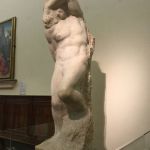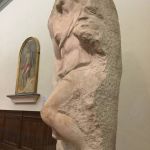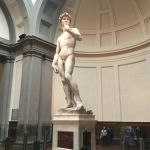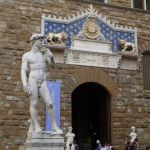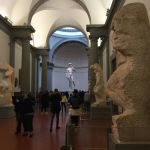Description
Michelangelo is considered one of the greatest artists of the Renaissance. His long and prolific career left us with some of the world’s most astounding works of art. He worked for some of the most important patrons of his day, like popes, cardinals, and members of the Medici family. He was a complete artist, mastering sculpture, painting, and architecture. This itinerary covers the earlier years of his career in Florence ‒ from the time when he was under the tutelage of Lorenzo the Magnificent of the Medici family; to his creation of the David during the years of the Florentine Republic; and ultimately to his final years in Florence at work at San Lorenzo before his departure for Rome. The itinerary will examine the life and times of this Renaissance genius with a look at not only the art of his day but also at the tumultuous political scene in Florence.
Below is a short description of some of the sites which can be included in the itinerary.
- Medici Tomb in the New Sacristy
The townhouse museum at Casa Buonarroti was established by Michelangelo’s heirs some time after his death to honor his achievements and legacy. The museum houses a collection of works including reliefs from his early career and drawings by Michelangelo owned by his family. At the Bargello the works of Michelangelo’s predecessors, like Donatello and Verrocchio, are on display. Here we will see the Davids by these early masters and study the David iconography in Florence. Also are display are works by Michelangelo such as the Bacchus, a truly modern freestanding male nude in the Classical tradition. An important part of the itinerary is a visit to the Accademia Gallery to admire the colossal David, Michelangelo’s ultimate masterpiece during his Florence years. Besides the David, we will also look at the so-called Prisoners, unfinished works intended to be part of a huge tomb monument for Pope Julius II. These unfinished works, still bearing chisel marks, show us sculpture in the making. Then at the New Sacristy at the basilica complex of San Lorenzo, we will see Michelangelo at work both as a sculpture and architect. The sacristy’s architecture is a magnificent example of Mannerist architecture in which Michelangelo challenged the principles of the Classical prototypes. It also contains tomb monument sculpture created for the Medici displaying expressive and dynamic figures, so typical of Michelangelo’s art. At the Uffizi, we will see the only surviving panel painting unanimously attributed to Michelangelo, the Doni Tondo. At the Museo dell’Opera del Duomo, the Cathedral museum, we will see works by Donatello and Lorenzo Ghiberti, but also one of Michelangelo’s last works, the unfinished Bandini Pietà. The itinerary also includes a walking tour through the city to map out the important sites and monuments in Michelangelo’s career, such as Piazza della Signoria, Orsanmichele, and Piazza Duomo.



